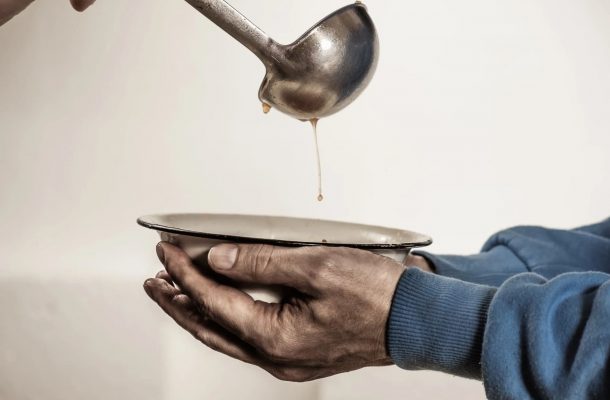“When we think of food insecurity as an issue,” says Monash University researcher and public health dietitian Dr Sue Kleve, “we might usually think of it in context of a developing country, not in a high-income country like Australia.”
Yet current estimates from the Australian Health Survey (2011-2012) suggest more than one million Australians are food-insecure. A 2017 Foodbank survey puts the number even higher, at 3.6 million Australians.
Dr Kleve, from Monash’s Department of Nutrition, Dietetics and Food, is investigating low to middle-income Melbourne households earning between $40,000 and $80,000 a year, and has found many struggle to maintain food security and often fall into food insecurity.
Her research has been published in The International Journal of Environmental Research and Public Health.
She uses a definition of food insecurity from the United Nations’ Food and Agriculture Organisation, which says it’s “the limited or uncertain availability of individuals’ and households’ physical, social and economic access to sufficient, safe, nutritious and culturally relevant food”.
It’s a complex, persistent and multidimensional public health issue, she says.

“There are many key interacting factors affecting a household’s food security status, including the food supply, physical and economic access to food and the use of food, and other socio-demographic characteristics of households. The major factor is a low income or limited financial resources.”
She says food insecurity in low to middle-income earners – who straddle the Victorian median income of about $73,000 – may experience food insecurity episodically or on an ongoing basis as household income is stretched in other directions, usually by unexpected expenses, working arrangements, illness or disability, increased housing costs, or changes in the number of people in the household.
Her research is believed to be the first to say that those considered middle-class may have trouble putting food on the family table, and to explore these experiences. Dr Kleve says the psychological stress of knowing this might happen – whether or not it ever does – is concerning.
“The experience of food insecurity varies and leads to experiences of stress, anxiety and concern about having enough food, enough money for food,” she says. “It leads to compromises and changes to the amount and types of food chosen. You might have to buy cheaper choices, which are higher in energy and lower in nutrition. People might skip meals and may go hungry. It’s like mortgage stress but with food – food stress.”
“People might skip meals and may go hungry. It’s like mortgage stress but with food – food stress.”
Dr Kleve led a team of four researchers from Monash and Flinders universities, and analysed Victorian Population Health Survey data (which indicated 4.5 per cent of Victorians were food-insecure). The team wanted to use this previous analysis as a springboard to investigate the experience of food insecurity.
Eventually they surveyed 134 people and then interviewed 16 people from Melbourne households, usually the food “gatekeeper” (the person who buys and cooks the food, usually female) about their experiences accessing food, including budgets, factors that impacted on their food decisions, coping strategies, and worries.
The household spokespeople who had experienced food insecurity told of a “rollercoaster ride, like walking a tightrope”, Dr Kleve says.
“If there was one step off the tightrope, such as someone losing a job or unexpected payments, then that added stress and anxiety.”
Resilience and resourcefulness
But the researchers also found “resilience and resourcefulness” in highly developed practices around budgeting, food knowledge, planning, shopping for food, and preparing food. These were important to households when the triggers of food insecurity were felt, but often they could only protect or buffer the food insecurity experience to a point.
“One woman told us of the pressure of an event at kinder where her child was asked to bring a fruit platter, but the family couldn’t afford it. This created stress because she didn’t want her child to be seen as doing it tough or missing out. Often there were other stories where the mother would say she would rather be the one missing out, so she changes the serving sizes of meals at home so she has less or misses out entirely.

“In a very nutrition-conscious household, we were told sometimes they couldn’t afford fresh food so had the $5 pizzas from Domino’s to get by. Another woman who had suffered a relationship breakdown affecting her household budget said her friends regularly bought her large packs of toilet paper so she had an extra $10 for food. People described being hesitant about asking for money for food from friends and family – they see it as their role to fulfil.
“After all,” she says, “food is a fundamental and basic human right.”
The majority of the participants were female and Australian-born, owned their home with a mortgage, and lived in it with a spouse and children. Decisions around food for those identified as food-insecure were “complex, often interconnected, dynamic and multifactorial”, the report states.
A deeper problem
Dr Kleve says the common response to food insecurity, similar to other higher-income countries, is through the provision of food, often via welfare agencies, and developing food programs that may focus on teaching people how to budget, cook or grow food.
But she says while these are important, they shouldn’t dominate a response, because the problem, now identified, is deeper and more complex than not knowing how to get food or how to prepare it.
“In order to prevent Australians from falling off the food security tightrope, a broad range of responses inclusive of, but beyond, food provision are required.
“While limited financial resources are a primary determinant of food security status,” the reports says, “this research confirmed that there are multiple additional determinants that must be considered to maintain food security.
“The findings of this work have shown the complexity of this as an issue may be used to support policies and practices to prevent or alleviate food-insecurity income groups in urban Australia.”
This article was published by Lens at Monash University.













